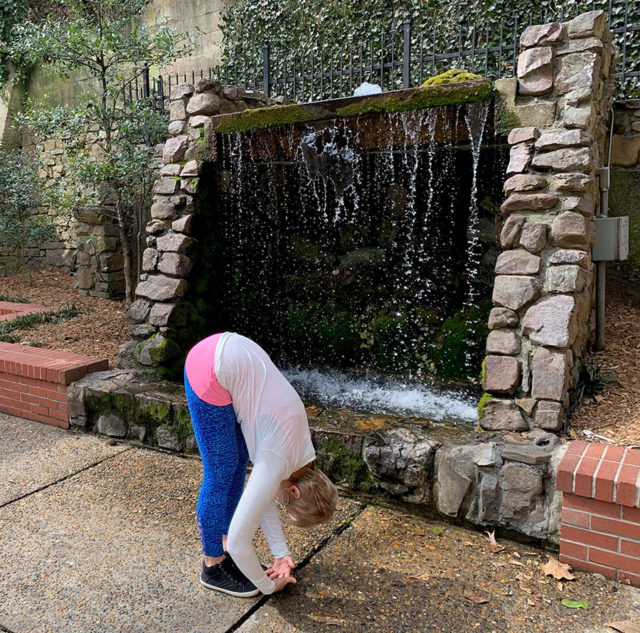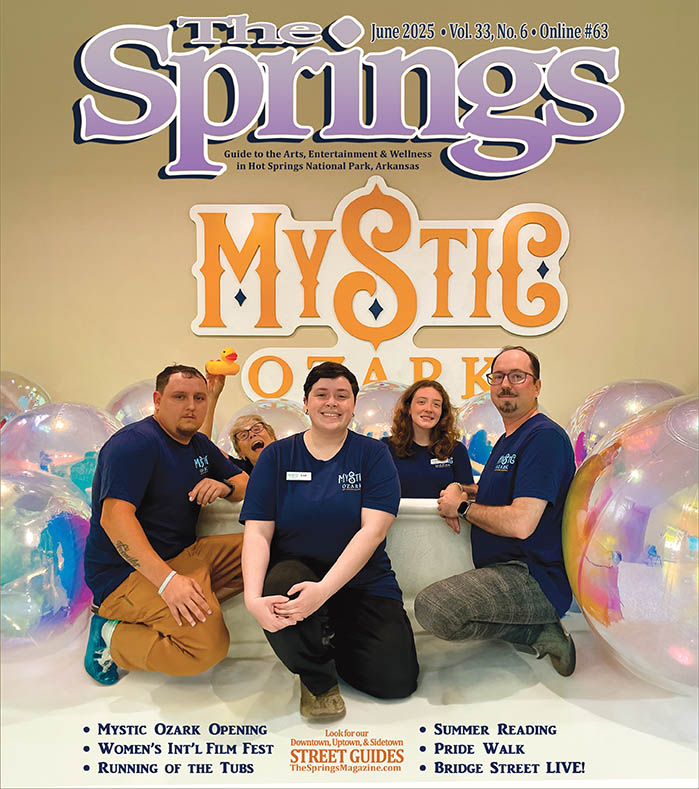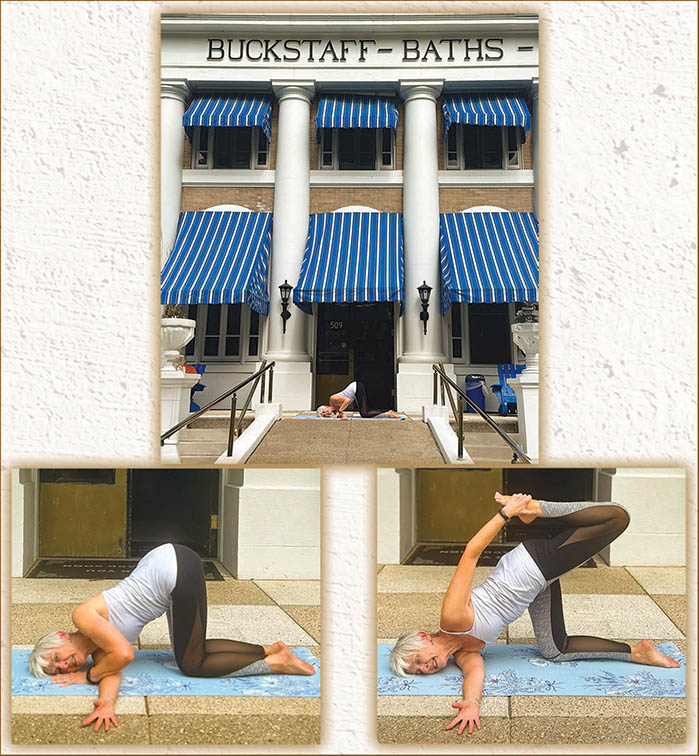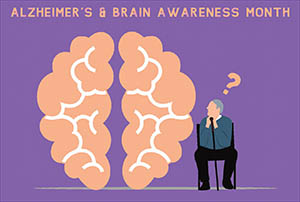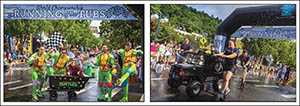Standing Forward Bend, demonstrated by yoga instructor Karen Watson Reeves, releases lower back tension and stretches hamstrings.
By Karen Watson Reeves
Let’s face it. Even without lifestyle disruptions like a pandemic or snow event, we sit a lot. And when we are sitting a lot, we seldom are sitting in a good posture. And when it is winter, I am not only sitting a lot, but I am hunkered down under a blanket or a few.
So. . . when I do stand up, geez. It is like everything hurts, and especially the low back. Like all forward bends, the standing version is a great way to release lower back tension, as well as lengthen the muscles that run along the spine.
Hamstrings can get very tight from sitting, as well as from vigorous exercise, if they are not stretched. The standing forward bend is an effective way to get them all stretchy.
Hanging upside down will also unload the spine. If you suffer from lumbar or neck pain, it could be caused by spinal compression. Fresh blood supply to the brain is another benefit of this upside-down pose. The forward bends help to calm and rest the body and mind, thereby relieving stress, both physical and mental.
As I hang upside down, I often imagine a waterfall, visualizing my spinal column decompressing, blood flowing in the opposite direction, the sound of water flowing calming my tension. Ahhhhh . . . it is soothing just thinking about it.
Karen Watson Reeves has called Hot Springs home since 2006. She became a registered yoga teacher and a registered children’s yoga teacher in 2011. She has taught children and family yoga in many settings and would welcome an opportunity to help your family stay physically active during this time of quarantine. She owns The Yoga Place, is on the Hot Springs YMCA teaching staff, is an adjunct instructor at National Park College, as well as teaching in several other fabulous venues. www.TheYogaPlaceHS.com.



